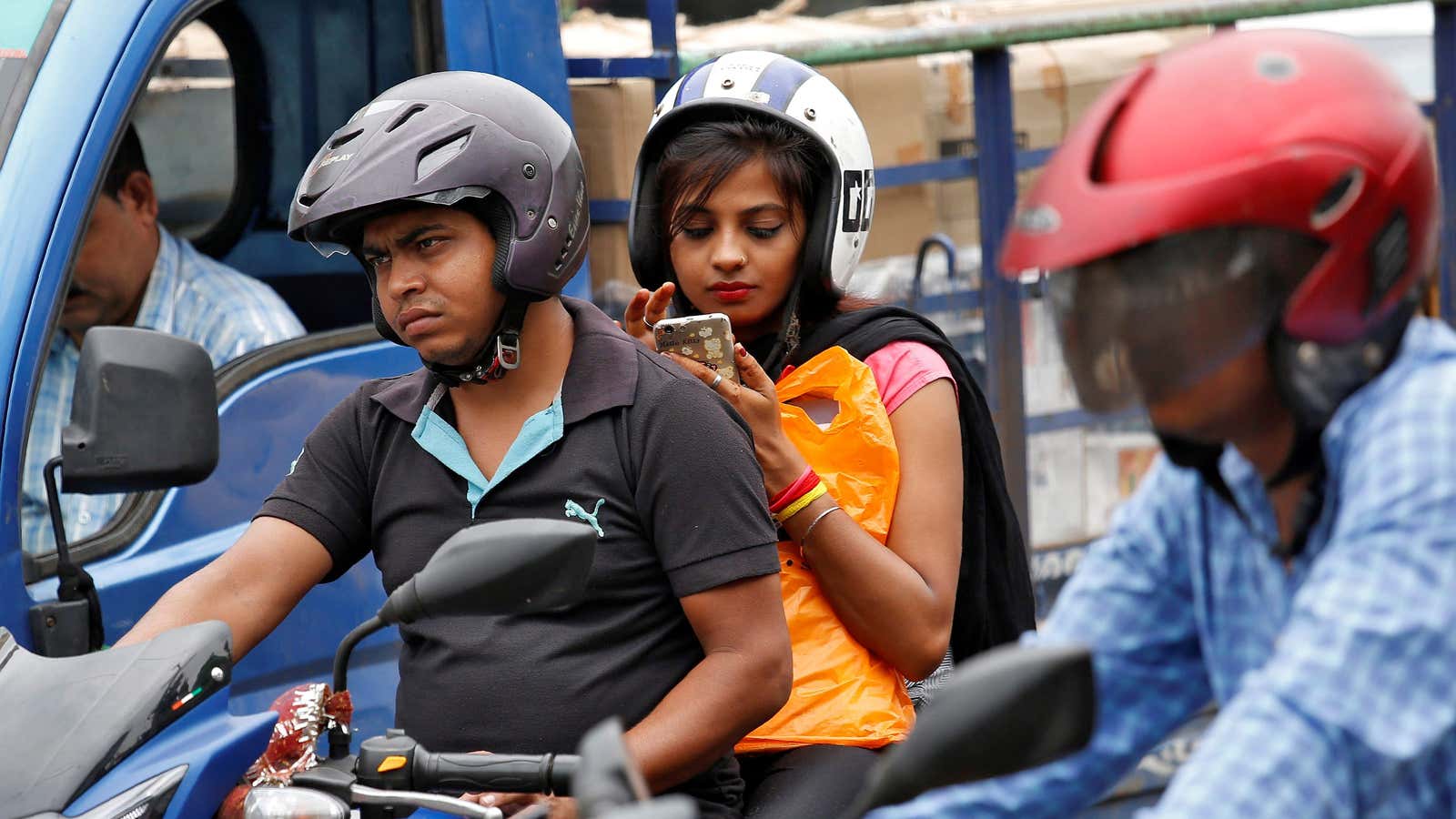The Indian government has a hack for women’s safety: a panic button.
Come Jan. 26, a pilot project to test a panic button feature on mobile phones will be launched in the northern state of Uttar Pradesh (UP), Maneka Gandhi, the union minister for women and child development, said on Jan. 02.
Once the designated key on basic phones or via an app on smartphones is pressed, calls will be placed to emergency number 112 and SMSes will be sent out to police authorities in the neighbourhood. This is besides a handful of family members of the person in distress and over 25 volunteers in the vicinity who will also be alerted through messages, NDTV reported.
“If it works in UP, it can work anywhere,” Gandhi said, referring to the state’s notoriety for having the highest rate of crimes against women in the country.
The facility to raise an alarm could go a long way in helping women in distress. But some pilot projects with the technology have not shown very promising results in India.
Ready for it?
The idea first emerged in April 2016 when, in a gazette notification, the department of telecommunication announced that, starting January 2017, every handset sold in the country must feature a panic button, and, by 2018, all phones must be GPS-enabled.
The plan suffered setbacks due to glitches during trials.
For instance, in Delhi, one of the world’s most unsafe cities for women, it wreaked havoc during a one-day trial over a year ago. Given India’s reputation for poor surveillance, spotty phone networks, and slow response rates to crime, Delhi residents themselves decided to give the panic button a trial run, sparking chaos among authorities.
“The lines got immediately jammed because there were so many people making prank calls,” Gandhi said. “(The) police then just completely backed off and this led us in delaying the project for over a year.”
And Delhi wasn’t alone.
In May 2016, Indian Railways installed panic buttons in the ladies’ compartments on a Mumbai local train. Despite cautioning commuters against their misuse, 1,000 false alarms were sounded in a month alone, officials said. In another case, within just the first hour of its launch in early 2015, Himmat, a free SOS-alert app launched by the Delhi Police in January 2015, sent out 3,000 alerts, of which only 45 were genuine.
Beyond reach
While the technology itself is not faulty, some experts question the usability of panic buttons.
In India, women—the target demographic for panic button usage—are 36% less likely to own a mobile phone than a man, according to GSMA, a worldwide mobile operators network. In the hinterlands, this disparity is even wider with only 12% of women using a phone.
This is especially worrisome since between Jan. 01, 1984 and Dec. 31, 2009, almost 80% of rapes were committed in rural areas, according to Mrinal Satish, a professor of law at Delhi’s National Law University and the author of Discretion, Discrimination and the Rule of Law: Reforming Rape Sentencing in India.
Besides, experts say, reaching out for a phone to press the panic button is not an instinctive reaction for a person in distress. In times of crisis, the tested methods of shouting for help or calling a trusted person kick in, said Amitabh Kumar, the head of media and communications at the Centre for Social Research (CSR), a Delhi-based women advocacy group. ”There are very few of us who would reach for a specific device or band. For that to function, we would need to specifically train women,” he said.
Also, the accused in over 80% of rape cases are persons known to the victim, according to Satish’s research. ”It is debatable whether panic-buttons on mobiles or any other form of technology would help when rapes occur at home or in situations where the accused is an acquaintance,” Satish told Quartz. Around friends and family, where you tend to let your guard down, people can become less self-aware and more unlikely to seek help.
Still, in a country of over a billion phone subscribers, even reaching some women is better than reaching none. ”The promptness and reach of technology are the factors which make it as a great tool of change,” Ranjana Kumari, director of CSR, said. “But we need to properly feed it into the justice systems and build the capacities of the police personnel so that they are efficient enough to use it aptly.”
While technology can help, what’s needed more is a better legal support system and improved cultural attitudes. So far, India has made little headway in either aspect because despite enacting tougher sentences for rapists and setting up “fast-track” courts, ill-equipped police officials, victim-blaming doctors, and a dearth of legal assistance run rampant.
